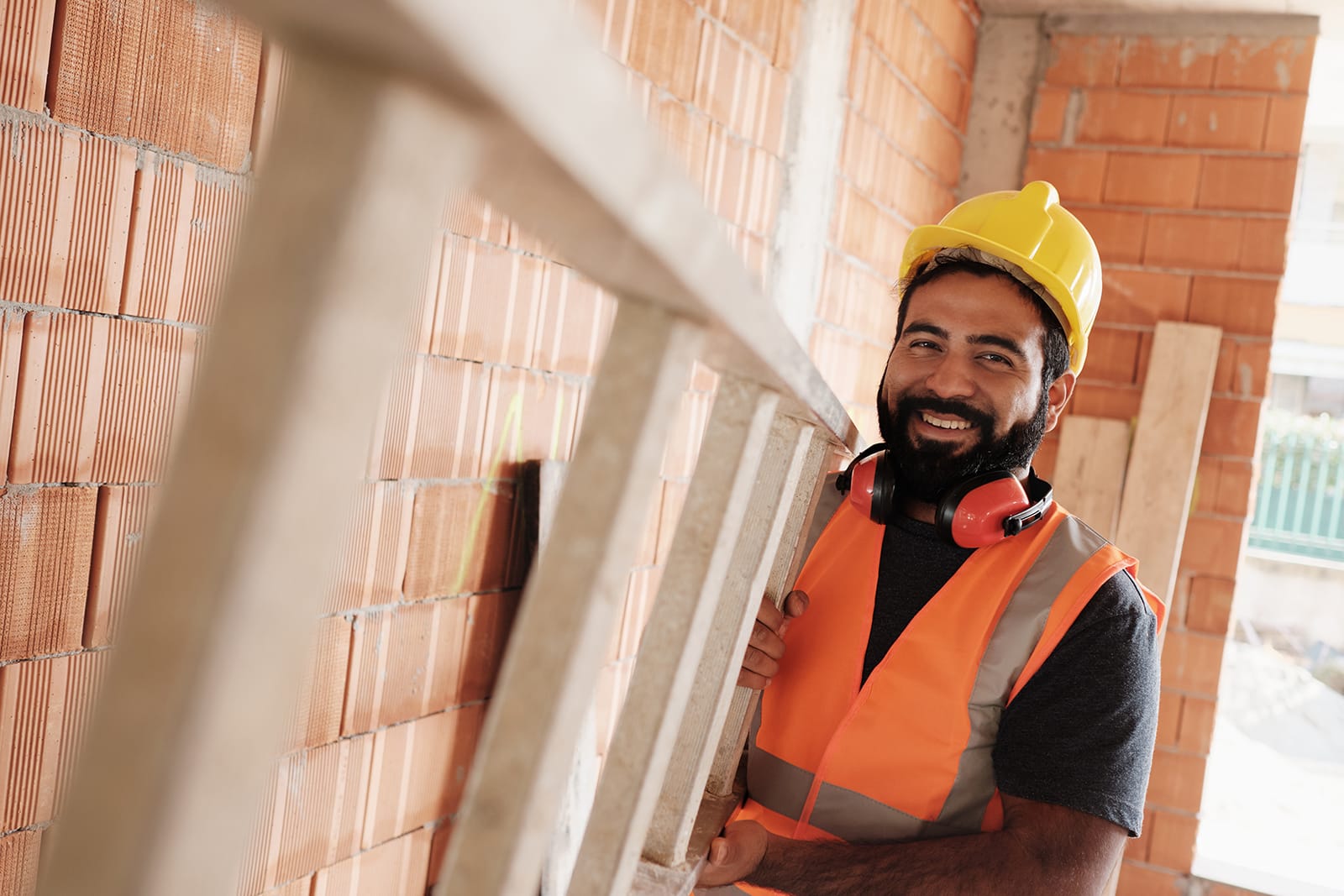Policy
Housing’s Workforce Crisis And The Near Silence on Immigration
A sweeping new NAHB-HBI study quantifies billions in losses from construction labor shortages. Still, does it tiptoe around a central issue builders can’t ignore?

The numbers are in. They’re staggering, full of blistering truths and takeaways that quantify the epic opportunity cost of homebuilding labor capacity constraint from the ground up.
A new report by the Home Builders Institute (HBI) and the National Association of Home Builders (NAHB), pegs the economic loss from the nation’s skilled labor crisis at nearly $6.3 billion annually in lost residential construction output.
This comprehensive study offers a clear, empirical, politically agnostic, economic market-sizing portrait of how deep and wide the labor shortage cuts across U.S. homebuilding markets.
Yet for all its precision in modeling lost housing output, delayed completions, and lost revenue, the report skirts a central and politically explosive issue playing out in real time across the nation: immigration.
The downplaying of such a force factor is consequential, especially in a current new-home market limbo, seized up by prohibitive new home asking price ranges, stubbornly high interest rates, and a heavy cloud of uncertainty hovering over many of the nation's most crucial new-home construction and development markets.
Released the same week the Trump administration ramped up federal immigration enforcement actions — including highly visible ICE raids on construction job sites in California, Texas, and Georgia — the study arrives in a volatile policy environment that is reshaping how builders think about risk, cost, and workforce strategy.
A Breakdown of the Top 10 Findings
Titled "Economic Impact of the Residential Construction Labor Shortage," the research report was ommissioned by the Home Builders Institute (HBI) in collaboration with the National Association of Home Builders (NAHB) and conducted by the University of Denver. The study offers the clearest and most quantified evidence to date of how acute the skilled labor gap has become for the single-family homebuilding sector.
Here are 10 of the most critical takeaways:
- $10.806 Billion Annual Economic Hit: The skilled labor shortage causes longer build times, translating to a staggering $10.8 billion annual economic loss.
- $2.663 billion in Carrying Costs: Longer construction timelines lead to increased carrying costs, which directly drain builder capital and suppress margins.
- 19,000 Homes Not Built: In 2024 alone, an estimated 19,000 single-family homes went unbuilt due to insufficient access to skilled labor.
- $8.143 billion in Lost Home Value: Unbuilt homes represent a direct opportunity cost to builders, the economy, and households in need.
- Average Construction Delay: 1.98 Months: Delays due to labor shortages stretch project timelines, with smaller builders facing even greater impact.
- Smaller Builders Hit Harder: Independent operators experience more acute slowdowns due to less access to scalable labor resources.
- Drag on Affordability: Fewer homes + higher costs = worsening affordability, especially for entry-level and move-up buyers.
- Ripple Effects Across Industries: Delays and losses extend into real estate, lending, manufacturing, logistics, and building products sectors.
- Workforce Gaps Are Structural, Not Cyclical: The research reinforces what builders know—this labor shortage is not a passing trend. It’s a structural constraint requiring strategic investment.
- Workforce Development Alone Is Not a Quick Fix: Despite investments in training and certification programs like those from HBI, the study implies that supply-side interventions will take time to move the needle.
Almost Forgotten Factor: The Elephant in the Room
In 47 pages of tightly constructed analysis and charts, the report — rigorous in its focus on quantifying economic impacts — mentions the word “immigrant” or “immigration” just six times on four pages. Allusions to a critical component of the labor supply equation are faint, despite real-time market dynamics making immigration policy and enforcement impossible to ignore.
Here are those mentions in full:
The reliance on immigrant labor, along with strained relationships with utility companies and entitlement delays, further complicates their ability to maintain timelines.
Looking forward, large builders emphasize the need for clearer immigration policies to secure a stable labor force and consider public-private partnerships as a means to overcome regulatory barriers.
Unresolved immigration policies have a disproportionate impact due to their reliance on immigrant labor.
Builders note that the cost pressures were compounded by labor shortages, supply chain disruptions, and the impact of immigration policies on workforce availability.
This glaring downplay, while understandable given the study’s scope and funding sources, contrasts sharply with a deepening, unfolding real-world, real-time crisis. According to recent estimates from Construction Analytics and the Center for American Progress:
- Immigrants make up roughly 20% of the U.S. construction workforce.
- About 15% of construction workers—1.3 million—are undocumented.
- In high-growth housing markets like California, Texas, Arizona, and Florida, immigrant labor represents up to 40% of the total workforce.
Remove this labor pool, and the industry will not just slow down — it will stall.
Ground-Level Fallout: ICE Raids = A Vanishing Labor Pool
Consider the scene at Home Depot parking lots—once teeming with day laborers—now increasingly vacant as ICE intensifies its immigration enforcement actions. The Wall Street Journal reported this week that the White House has directed Immigration and Customs Enforcement (ICE) to concentrate raids at locations like Home Depot and 7-Eleven stores.
These day laborers are not simply bystanders; they’re vital frontline participants in construction activity—roofers, framers, drywall installers, painters, finish carpenters. Without them, projects grind to a halt.
Ed Zarenski of Construction Analytics warns that losing even a fraction of undocumented construction workers could:
- Result in $100 billion in lost construction output annually.
- Delay new housing starts by years.
- Set back productivity gains for the next decade.
As builders contend with material inflation, interest rate volatility, and permitting delays, a shrinking labor force is not just a supply-side bottleneck—it’s a threat to viability.
Strategic Implications
For homebuilding, land development, and investment executives, the confluence of a chronic skilled labor shortfall and stepped-up immigration enforcement cannot be treated as separate issues.
- Risk Management: Builders need to account for labor force volatility in project underwriting and margin forecasting.
- Operational Contingency: Regional operators may be forced to adjust project phasing, cycle times, and construction starts based on local workforce disruption.
- Capital Allocation: Private equity, REITs, and bank lenders underwriting homebuilding risk must now factor enforcement shocks into land acquisition and build-to-rent investment models.
- Policy Advocacy: National and regional builder organizations must decide whether workforce development is enough—or whether immigration reform becomes part of the talent pipeline solution.
Why This Moment Demands Straight Talk and Action
This is not about politics. It’s about math.
The HBI-NAHB study delivers a powerful message backed by economic analysis: if we can’t solve the construction labor shortage, we can’t solve the housing shortage.
But until immigration is acknowledged not just as a challenge but as a necessary part of the skilled trades solution, the U.S. residential construction industry will keep bleeding time, money, and opportunity.
In today’s environment of rising enforcement and vanishing workers, ignoring that elephant in the room is no longer an option. Policy silence is no longer an option. Builders’ associations, chambers of commerce, and housing advocacy groups need to engage more forcefully in calling for a rationalized work visa system that aligns immigration policy with economic need. Carrillo offers one roadmap:
Let’s talk about a work visa for construction workers that can stay here, with restitution. Make them taxpayers, help out the industry. That’s a win for everyone.”
Why This Moment Demands Action
The HBI-NAHB study provides vital benchmarking. It gives homebuilders and policymakers a hard-numbers reality check on the cost of inaction. But its political caution—while perhaps strategic—blunts the urgency of its findings.
You can’t fix a workforce crisis if you’re not allowed to name it.
Builders don’t need platitudes. They need solutions that match the urgency of the moment. That includes funding for training, yes. But it also includes immigration reform, humane enforcement practices, and a path forward for the hundreds of thousands of undocumented workers who are already holding up America’s housing supply.
Because the alternative—as the Denver Study shows in exacting detail—is a housing economy that keeps losing ground, one unbuilt home at a time.
MORE IN Policy
Arkansas ADU Law Sets Fast-Approaching Housing Deadline
Arkansas’s bold new housing law gives cities until January 1 to legalize accessory dwelling units statewide. The move could reshape how local zoning and housing affordability intersect across one of America’s fastest-growing regions.
Dallas Rewrites Its Zoning Legacy to Fix Housing Shortage
After decades of single-family dominance, Dallas is embracing density again. A landmark ordinance revives small-scale housing once zoned out of existence — and signals a turning point for Texas growth policy.
Arizona’s New Water Framework Revives Housing Prospects
After a yearlong construction freeze, Arizona finally has a path forward. A new water framework could unlock 60,000 homes — and redefine how growth happens in the desert.
